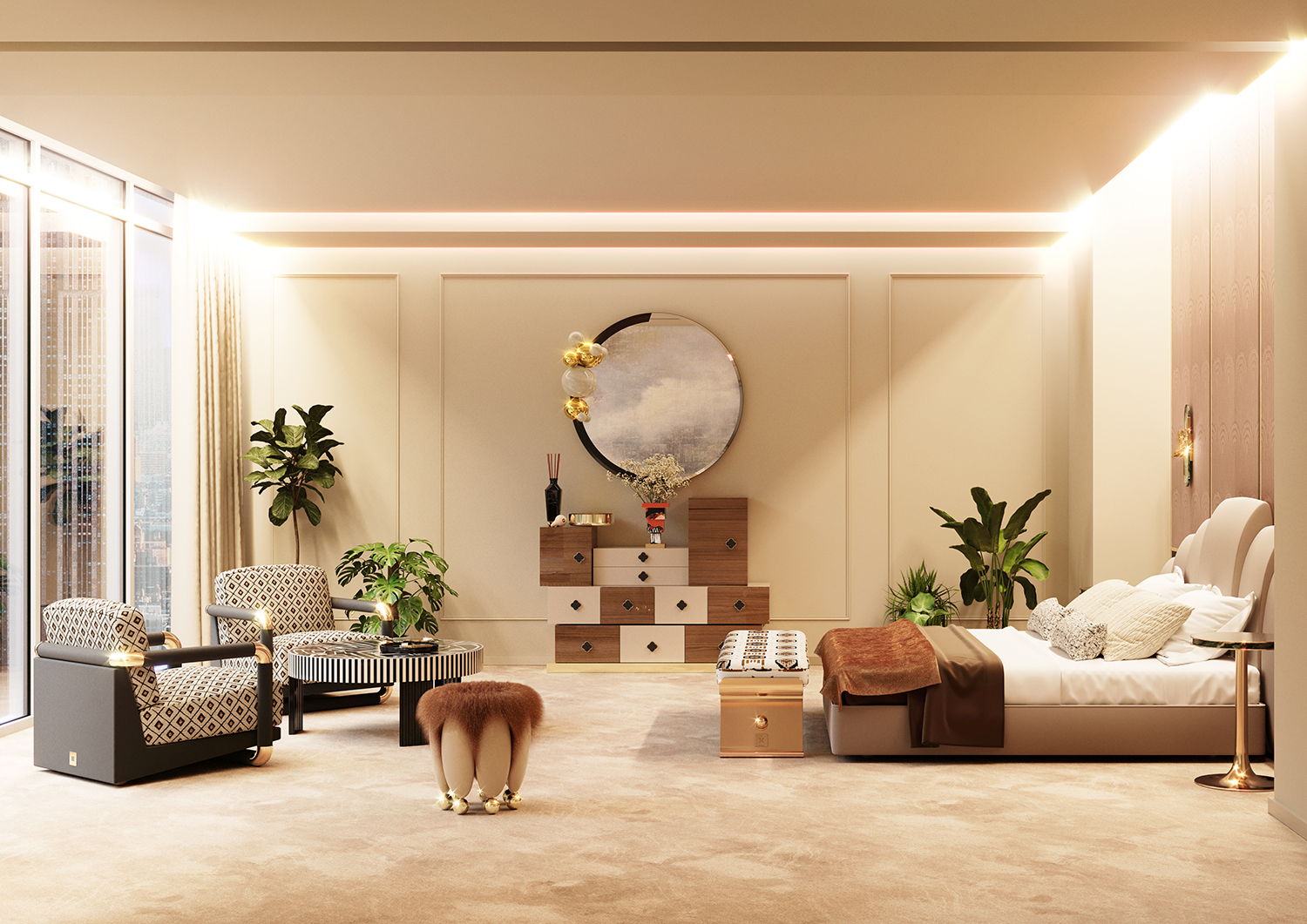Explore expert miami interior design for high-end home and office interiors.
Explore expert miami interior design for high-end home and office interiors.
Blog Article
Transform Your Home With Crucial Principles of Interior Decoration and Looks
By recognizing the effect of shade theory and the relevance of texture and patterns, one can develop areas that are not only aesthetically enticing however also deeply individual. Accomplishing this equilibrium involves even more than simple design; it encompasses a strategic plan and a keen understanding of exactly how each element interacts within a room.
Comprehending Shade Concept
Color theory is an essential facet of indoor layout that dramatically influences mood, perception, and total visual. Understanding the concepts of shade theory permits designers to develop areas that reverberate emotionally with owners while meeting functional needs (miami luxury interior design). Shades can be categorized right into three main kinds: primary, second, and tertiary. Each classification plays a critical role in developing harmony within a room.
The psychological effect of shades is extensive; cozy tones such as reds and oranges evoke energy and warmth, while trendy tones like blues and eco-friendlies promote peace and tranquility. The use of corresponding shades boosts aesthetic interest, creating striking contrasts that can elevate an area's allure.
Neutral shades, on the various other hand, act as a versatile backdrop, enabling various other style components to beam. It is necessary to think about aspects such as lights and the room's purpose when selecting a color palette, as these can alter the perception of colors throughout the day.
Ultimately, a well-considered color design can transform a space, fostering a sense of comfort and style that aligns with the occupants' choices. Mastery of color concept is, consequently, an important ability for any kind of interior designer aiming to develop harmonious and inviting environments.
Attaining Balance in Design
How can developers accomplish a feeling of balance in their spaces? Attaining equilibrium in style is fundamental to producing harmonious insides.
Asymmetrical balance, on the other hand, relies upon varying components that still accomplish a natural look. This strategy permits more dynamic and casual arrangements, supplying interest while preserving stability. By meticulously selecting differing dimensions, colors, and structures, developers can create a visually engaging space that feels well balanced yet energised.
Radial balance highlights a central prime focus with components radiating outside. This design is typically seen in round formats, where furniture and decor produce a natural border that draws the eye inward.
Eventually, achieving equilibrium calls for thoughtful consideration of range, percentage, and the relationships between elements. interior design firms. By masterfully using these equilibrium concepts, developers can change spaces into atmospheres that really feel both cosmetically pleasing and functionally unified, boosting the total experience for occupants
Significance of Spatial Understanding

A keen sense of spatial recognition allows developers to determine focal factors within a room, directing the customer's attention to vital features while preserving an overall feeling of unity. It likewise assists in the critical placement of illumination, which can significantly influence the assumption of space and state of mind. In addition, recognizing spatial connections makes it possible for the developer to deal with the particular needs of citizens, making certain that each area offers its desired objective without jeopardizing visual appeals.
Inevitably, spatial recognition is critical for making the most of the potential of any kind of interior space. By thoroughly taking into consideration the interplay in between dimensions, format, and feature, designers can develop atmospheres that not just meet sensible demands but additionally stimulate a sense of convenience and charm, boosting the general living experience.
Incorporating Texture and Patterns
Welcoming a varied variety of textures and patterns can dramatically improve the aesthetic and responsive charm of an indoor space. The critical use of various materials-- such as timber, metal, textile, and stone-- produces deepness and rate of interest, making an area feel much more welcoming and dynamic. Integrating smooth surface areas with harsh appearances can establish an equilibrium that attracts the eye and engages the senses.
When integrating patterns, consider both scale and rep. Large patterns can act as prime focus, while smaller sized, subtle styles can match various other elements without overwhelming the room. Layering patterns, such as pairing flower cushions with striped throws, includes intricacy and a feeling of harmony if performed attentively.
It is also vital to maintain a natural color palette, guaranteeing that appearances and patterns interact as opposed to compete for interest. By picking a few crucial structures and patterns, you can produce a combined aesthetic that reflects your individual style while improving the overall ambiance of the area. Inevitably, the cautious consolidation of these elements can change an ordinary space right into an innovative atmosphere rich with personality and heat.
Customizing Your Area
Creating a room that shows your character is vital to attaining an absolutely welcoming atmosphere. Personalization in indoor style allows you to instill your distinct design and rate of interests into your home, changing it from a mere sanctuary into a sanctuary that talks try here to that you are. Begin by picking a color scheme that resonates with your feelings-- strong hues can invigorate, while soft tones provide tranquility.
Integrate artwork and decoration that reflect your interests, whether it be travel, nature, or abstract ideas. Showing personal collections, such as publications, photos, or souvenirs, can stimulate cherished memories and develop prime focus within a room. In addition, think about tailoring functional items, like upholstered furnishings, to align with your visual preferences.

Final Thought
In verdict, the improvement of a home via the crucial principles of interior decoration and visual appeal requires a thorough understanding of color theory, balance, spatial recognition, texture, and personalization. Each component contributes considerably to producing a harmonious and practical living setting - luxury interior design. By thoughtfully integrating these concepts, people can enhance the visual charm and psychological vibration of their great site rooms, inevitably cultivating a home that mirrors unique identifications while providing comfort and practicality
Report this page